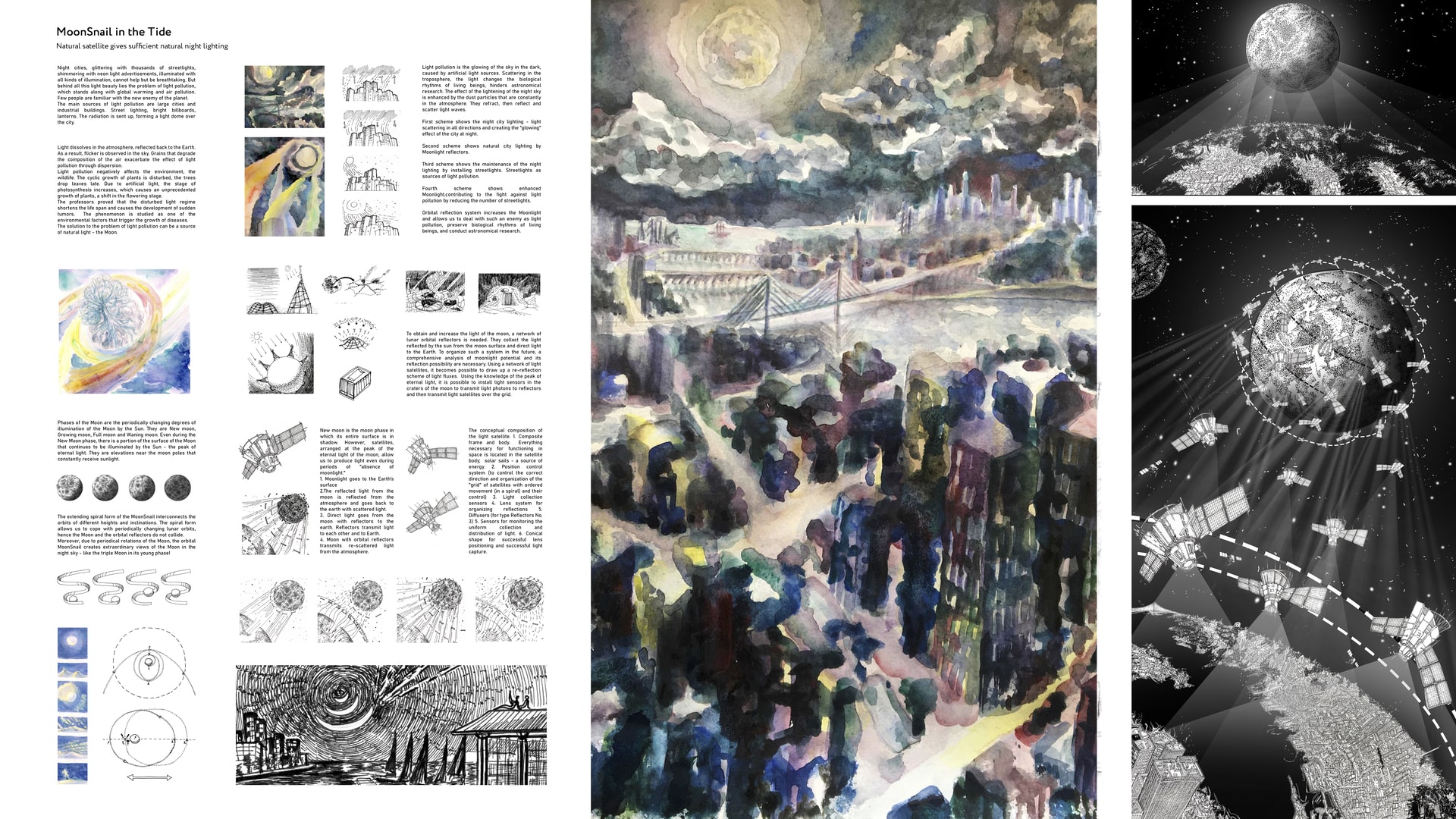Project Description
Natural satellite gives sufficient natural night lightling Night cities, glittering with thousands of streetlights, shimmering with neon light advertisements, illuminated with all kinds of illumination, cannot help but be breathtaking. But behind all this light beauty lies the problem of light pollution, which stands along with global warming and air pollution. Few people are familiar with the new enemy of the planet. The main sources of light pollution are large cities and industrial buildings. Street lighting, bright billboards, lanterns. The radiation is sent up, forming a light dome over the city. Light dissolves in the atmosphere, reflected back to the Earth. As a result, flicker is observed in the sky. Grains that degrade the composition of the air exacerbate the effect of light pollution through dispersion. Light pollution negatively affects the environment, the wildlife. The cyclic growth of plants is disturbed, the trees drop leaves late. Due to artificial light, the stage of photosynthesis increases, which causes an unprecedented growth of plants, a shift in the flowering stage. The professors proved that the disturbed light regime shortens the life span and causes the development of sudden tumors. The phenomenon is studied as one of the environmental factors that trigger the growth of diseases. The solution to the problem of light pollution can be a source of natural light - the Moon. Orbital reflection system increases the Moonlight and allows us to deal with such an enemy as light pollution, and preserve biological rhythms . Light pollution is the sky, glowing in the dark, caused by artificial light sources. Scattering in the troposphere, the light changes the biological rhythms of living beings, hinders astronomical research. The effect of the lightening of the night sky is enhanced by the dust particles that are constantly in the atmosphere. They refract, then reflect and scatter light waves. First scheme shows the night city lighting - light scattering in all directions and creating the "glowing" effect of the city at night. Second scheme shows natural city lighting by Moonlight reflectors. Third scheme shows the maintenance of the night lighting by installing streetlights. Streetlights as sources of light pollution. Fourth scheme shows enhanced Moonlight,contributing to the fight against light pollution by reducing the number of streetlights. Phases of the Moon are the periodically changing degrees of illumination of the Moon by the Sun. They are New moon, Growing moon, Full moon and Waning moon. Even during the New Moon phase, there is a portion of the surface of the Moon that continues to be illuminated by the Sun - the peak of eternal light. They are elevations near the moon poles that constantly receive sunlight. The extending spiral form of the MoonSnail interconnects the orbits of different heights and inclinations. The spiral form allows us to cope with periodically changing lunar orbits, hence the Moon and the orbital reflectors do not collide. Moreover, due to periodical rotations of the Moon, the orbital MoonSnail creates extraordinary views of the Moon in the night sky - like the triple Moon in its young phase! To obtain and increase the light of the moon, a network of lunar orbital reflectors is needed. They collect the light reflected by the sun from the moon surface and direct light to the Earth. To organize such a system in the future, a comprehensive analysis of moonlight potential and its reflection possibility are necessary. Using a network of light satellites, it becomes possible to draw up a re-reflection scheme of light fluxes. Using the knowledge of the peak of eternal light, it is possible to install light sensors in the craters of the moon to transmit light photons to reflectors and then transmit light satellites over the grid. New moon is the moon phase in which its entire surface is in shadow. However, satellites, arranged at the peak of the eternal light of the moon, allow us to produce light even during periods of "absence of moonlight." 1. Moonlight goes to the Earth’s surface 2.The reflected light from the moon is reflected from the atmosphere and goes back to the earth with scattered light. 3. Direct light goes from the moon with reflectors to the earth. Reflectors transmit light to each other and to Earth. 4. Moon with orbital reflectors transmits re-scattered light from the atmosphere. The conceptual composition of the light satellite. 1. Composite frame and body. Everything necessary for functioning in space is located in the satellite body; solar sails - a source of energy. 2. Position control system (to control the correct direction and organization of the "grid" of satellites with ordered movement and their control) 3. Light collection sensors 4. Lens system for organizing reflections 5. Diffusers 5. Sensors for monitoring the uniform collection and distribution of light. 6. Conical shape for successful lens positioning and successful light capture.
